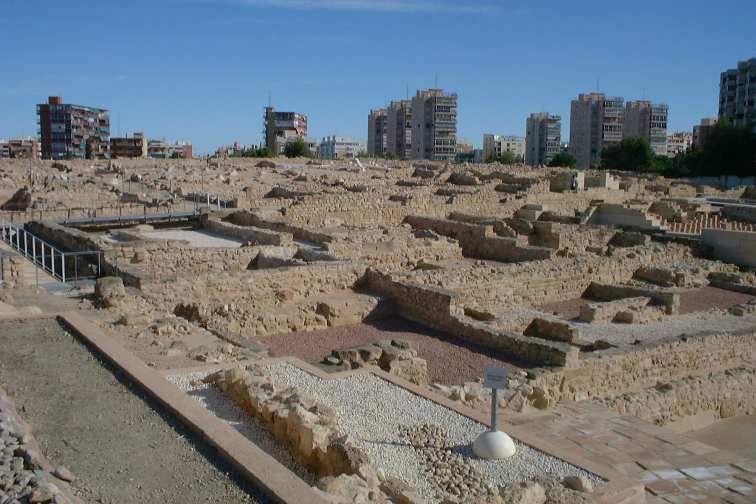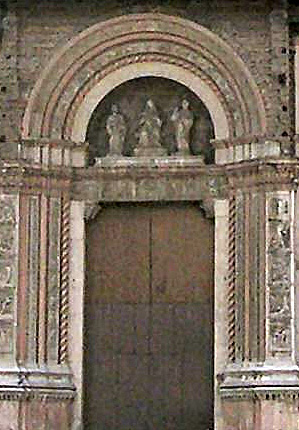|
Lipsanotheca
A lipsanotheca (Italian ''lipsanoteca'') is a reliquary, specifically a small box containing the actual relics inside a reliquary. The term derives from Greek through Late Latin. It has also come to be applied to monumental displays of relics. In modern English, it usually refers to a small number of individual very old reliquaries, most often the 4th century ivory Brescia Casket, which is the most likely meaning of the plain term, especially in its Italian version. A 13th century wooden box in Alicante, Spain, is also called a lipsanotheca. The National Museum of Catalan Art (MNAC) in Barcelona has a digitized display that references another famous 10th century lipsanotheca made of stone called the Lipsanotheca of Santa Maria de Lillet. The altarpiece is the ''Cappella delle Reliquie'' in The Basilica of San Petronio in Bologna is a lipsanotheca containing many reliquaries. In the basilica of San Lorenzo el Real in the El Escorial El Escorial, or the Royal Site of San Lo ... [...More Info...] [...Related Items...] OR: [Wikipedia] [Google] [Baidu] |
Reliquary
A reliquary (also referred to as a ''shrine'', by the French term ''châsse'', and historically including ''wikt:phylactery, phylacteries'') is a container for relics. A portable reliquary may be called a ''fereter'', and a chapel in which it is housed a ''feretory''. Relics may be the purported or actual physical remains of saints, such as bones, pieces of clothing, or some object associated with saints or other religious figures. The authenticity of any given relic is often a matter of debate; it is for that reason, some churches require documentation of the relic's provenance. Relics have long been important to Buddhism, Buddhists, Christianity, Christians, Hinduism, Hindus and to followers of many other religions. In these cultures, reliquaries are often presented in shrines, churches, or temples to which the faithful make pilgrimages in order to gain blessings. The term is sometimes used loosely of containers for the body parts of non-religious figures; in particular the ... [...More Info...] [...Related Items...] OR: [Wikipedia] [Google] [Baidu] |
Late Latin
Late Latin ( la, Latinitas serior) is the scholarly name for the form of Literary Latin of late antiquity.Roberts (1996), p. 537. English dictionary definitions of Late Latin date this period from the , and continuing into the 7th century in the Iberian Peninsula. This somewhat ambiguously defined version of Latin was used between the eras of Classical Latin and Medieval Latin. Scholars do not agree exactly when Classical Latin should end or Medieval Latin should begin. Being a written language, Late Latin is not the same as Vulgar Latin. The latter served as ancestor of the Romance languages. Although Late Latin reflects an upsurge of the use of Vulgar Latin vocabulary and constructs, it remains largely classical in its overall features, depending on the author who uses it. Some Late Latin writings are more literary and classical, but others are more inclined to the vernacular. Also, Late Latin is not identical to Christian patristic Latin, used in the theological writings of ... [...More Info...] [...Related Items...] OR: [Wikipedia] [Google] [Baidu] |
Brescia Casket
The Brescia Casket or Lipsanotheca (in Italian ''Lipsanoteca'') is an ivory box, perhaps a reliquary, from the late 4th century, which is now in the Museo di Santa Giulia at San Salvatore in Brescia, Italy. It is a virtually unique survival of a complete Early Christian ivory box in generally good condition. The 36 subjects depicted on the box represent a wide range of the images found in the evolving Christian art of the period, and their identification has generated a great deal of art-historical discussion, though the high quality of the carving has never been in question. According to one scholar: "despite an abundance of resourceful and often astute exegesis, its date, use, provenance, and meaning remain among the most formidable and enduring enigmas in the study of early Christian art". The complex iconography of the five faces is illustrated and identified below. History The box was made by a northern Italian workshop, probably in Milan, where Saint Ambrose was b ... [...More Info...] [...Related Items...] OR: [Wikipedia] [Google] [Baidu] |
Alicante
Alicante ( ca-valencia, Alacant) is a city and municipality in the Valencian Community, Spain. It is the capital of the province of Alicante and a historic Mediterranean port. The population of the city was 337,482 , the second-largest in the Valencian Community. Toponymy The name of the city echoes the Arabic name ''Laqant'' () or ''al-Laqant'' (), which in turn reflects the Latin ''Lucentum'' and Greek root ''Leuké'' (or ''Leuka''), meaning "white". History The area around Alicante has been inhabited for over 7000 years. The first tribes of hunter-gatherers moved down gradually from Central Europe between 5000 and 3000 BC. Some of the earliest settlements were made on the slopes of Mount Benacantil. By 1000 BC Greek and Phoenician traders had begun to visit the eastern coast of Spain, establishing small trading ports and introducing the native Iberian tribes to the alphabet, iron, and the pottery wheel. The Carthaginian general Hamilcar Barca established the fortifie ... [...More Info...] [...Related Items...] OR: [Wikipedia] [Google] [Baidu] |
San Petronio, Bologna
The Basilica of San Petronio is a minor basilica and church of the Archdiocese of Bologna located in Bologna, Emilia Romagna, northern Italy. It dominates Piazza Maggiore. The basilica is dedicated to the patron saint of the city, Saint Petronius, who was the bishop of Bologna in the fifth century. Construction began in 1390 and its main facade has remained unfinished since. The building was transferred from the city to the diocese in 1929; the basilica was finally consecrated in 1954. It has been the seat of the relics of Bologna's patron saint only since 2000; until then they were preserved in the Santo Stefano church of Bologna. History Construction In 1388, the ''Consiglio Generale dei Seicento'' prepared the construction of the church as a civic temple. To make room for the church, the adjacent Curia of Sancti Ambrosii was demolished, together with the majority of one of the city's burgs, including at least eight churches and towers. The first stone of construction was ... [...More Info...] [...Related Items...] OR: [Wikipedia] [Google] [Baidu] |
Bologna
Bologna (, , ; egl, label= Emilian, Bulåggna ; lat, Bononia) is the capital and largest city of the Emilia-Romagna region in Northern Italy. It is the seventh most populous city in Italy with about 400,000 inhabitants and 150 different nationalities. Its metropolitan area is home to more than 1,000,000 people. It is known as the Fat City for its rich cuisine, and the Red City for its Spanish-style red tiled rooftops and, more recently, its leftist politics. It is also called the Learned City because it is home to the oldest university in the world. Originally Etruscan, the city has been an important urban center for centuries, first under the Etruscans (who called it ''Felsina''), then under the Celts as ''Bona'', later under the Romans (''Bonōnia''), then again in the Middle Ages, as a free municipality and later ''signoria'', when it was among the largest European cities by population. Famous for its towers, churches and lengthy porticoes, Bologna has a well-preserved ... [...More Info...] [...Related Items...] OR: [Wikipedia] [Google] [Baidu] |
El Escorial
El Escorial, or the Royal Site of San Lorenzo de El Escorial ( es, Monasterio y Sitio de El Escorial en Madrid), or Monasterio del Escorial (), is a historical residence of the King of Spain located in the town of San Lorenzo de El Escorial, up the valley ( road distance) from the town of El Escorial and about northwest of the Spanish capital Madrid. Built between 1563 and 1584 by order of King Philip II (who reigned 1556–1598), El Escorial is the largest Renaissance building in the world. It is one of the Spanish royal sites and functions as a monastery, basilica, royal palace, pantheon, library, museum, university, school, and hospital. El Escorial consists of two architectural complexes of great historical and cultural significance: the royal monastery itself and '' La Granjilla de La Fresneda'', a royal hunting lodge and monastic retreat about 5 kilometres away. These sites have a dual nature: during the 16th and 17th centuries, they were places in which the power of th ... [...More Info...] [...Related Items...] OR: [Wikipedia] [Google] [Baidu] |







